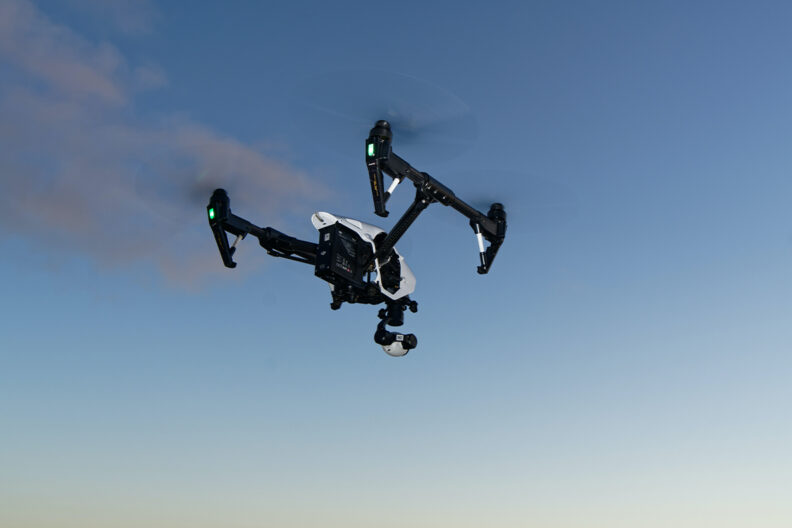
Designing safe and workable autonomous, electric-powered flight is a complex engineering problem.
Designing safe and workable autonomous, electric-powered flight is a complex engineering problem.
To use electric power instead of fossil fuels to fly requires systems that are light, use a minimum amount of energy, make proper flying decisions, and are safe. Even a relatively simple UAV can have hundreds of thousands of design possibilities for its power system, only a few of which are the best for maximizing safety and efficiency.
A WSU research team recently developed and used a machine learning algorithm to find the five optimal designs out of about 250,000 possible designs for an electric power system for an autonomous unmanned aerial vehicle by evaluating less than 0.05% of the designs. The work could mean time and cost savings for engineers who are seeking to solve complex engineering problems to maximize safety and sustainability. The researchers presented their work at the IEEE Energy Conversion Congress and Exposition.
Jana Doppa
“It’s like finding a needle in a haystack – and what you find also has to be safe and meet all the constraints,” said Jana Doppa, George and Joan Berry Chair Associate Professor in the WSU School of Electrical Engineering and Computer Science. “It’s a very hard problem.”
The work was led by graduate student Syrine Belakaria and Doppa in collaboration with a power engineering research team from Oregon State University.
Because of concerns about carbon emissions and sustainability, modern aviation systems are moving toward being more electrified and ever more efficient. The Boeing 787 includes a more electric power system than past plane models, and Amazon Prime is developing autonomous unmanned aerial vehicle delivery. Their power systems require multiple power electronic converters, machines, energy storage, wiring, and cooling devices.
The UAV system architecture, for instance, includes a battery pack, inverters, motors, and wiring, and the system has to meet a goal of, say, flying for 30 minutes, carrying a certain amount of cargo.
Engineers have to spend a lot of time and resources to find the optimal design to meet energy efficiency goals and physical constraints for such systems, developing models of power system components and running thousands of design scenarios. The simulations can take hours to days for each subsystem component. The engineers then decide on a few final candidates, making their picks based on experience.
Syrine Belakaria
“Such modeling-based simulations are computationally expensive as numerous iterations are required to settle on the optimal design,” said Belakaria.
In their work, the WSU and Oregon State team developed a machine learning algorithm that was able to factor several design goals, including safety, and find the optimal solutions, drastically reducing the number of design iterations required. The researchers assessed the entire system, rather than optimizing single components.
“Much of the machine learning work in this problem space focuses on single objective optimization,” Doppa said. “Optimizing multiple objectives is more difficult and less explored, and that’s what Syrine has been focusing on. And, until now, nobody has used machine learning to look at the multi-objective setting where there are also safety constraints.”
The algorithm looked at designs one by one, evaluating them, learning, and then, based on what it had learned, updating the machine learning model. That allowed the algorithm to quickly rule out many of the designs and narrow down the choices to about 1,000 designs, from which it was able to find five that were most efficient and safest.
“We came up with an algorithm that is efficient, works very well, and is able to find the very few, safe, and optimal needles in the haystack,” Belakaria said.
The researchers said the work could be applied to a variety of complex design applications. Belakaria, who was recently named a finalist for a prestigious Microsoft Research Graduate Fellowship, hopes to continue her work in applying artificial intelligence to improve resource-efficiency and sustainability.
“You can use our method for other design optimization problems which have a lot of constraints and you’re looking for very specific designs that are able to satisfy all those constraints,’” she said. “Our algorithm is general and can be used beyond power systems design.”
Source: https://news.wsu.edu/2021/01/27/using-machine-learning-solve-engineering-challenges/